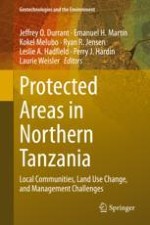2020 | OriginalPaper | Chapter
2. Growing Concern for the Conservation of Cavity-Nesting Birds Outside Protected Areas: Can Artificial Nest Boxes Be Effective Conservation Tools?
Authors : Hamadi I. Dulle, Saleh S. Seif, Shedrack K. Mungure, Jafari R. Kideghesho
Published in: Protected Areas in Northern Tanzania
Publisher: Springer International Publishing
Activate our intelligent search to find suitable subject content or patents.
Select sections of text to find matching patents with Artificial Intelligence. powered by
Select sections of text to find additional relevant content using AI-assisted search. powered by
